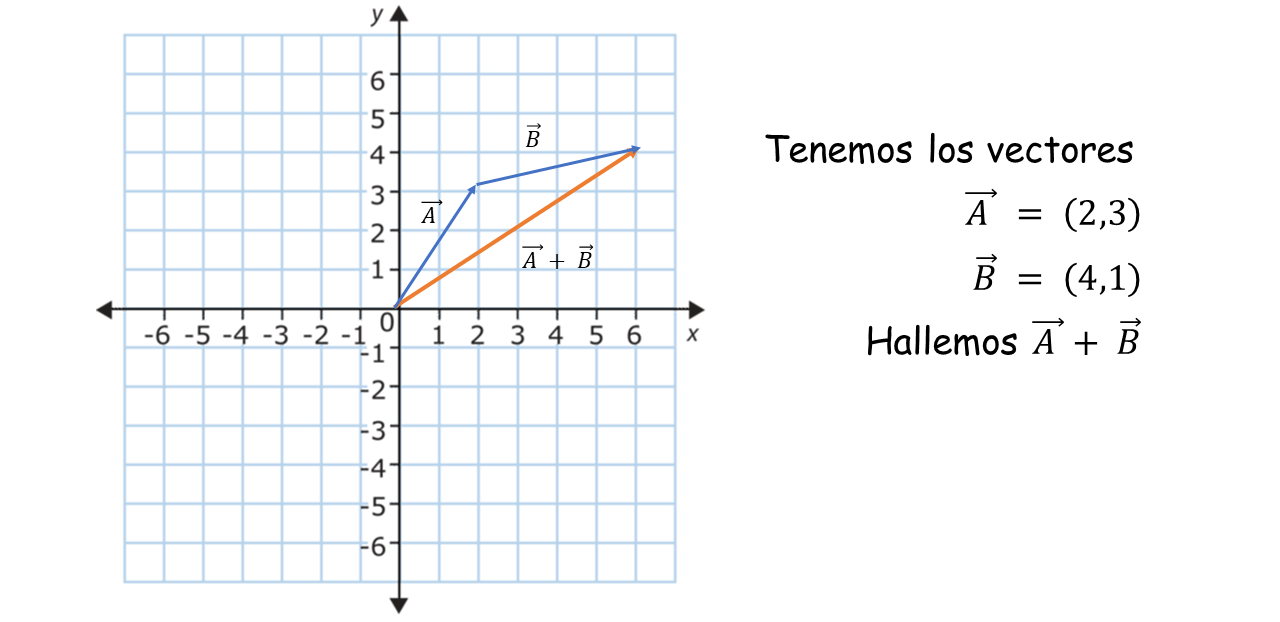Hablemos sobre la Suma y Resta de Vectores // Let's Talk About Vector Addition and Subtraction
2 comments
¡Hola querida comunidad científica de #Hive, reciban todos un cordial saludo!🖐
Hello dear #Hive scientific community, receive warm greetings from all of you!🖐
Continuando con el tema de Vectores, en esta ocasión quiero abordar las operaciones con vectores, específicamente de la Suma y Resta de Vectores
Continuing with the topic of Vectors, this time I want to deal with operations with vectors, specifically Vector Addition and Subtraction.

Imagen realizada con la página web de diseño gráfico y composición de imágenes Canva // Image made with the graphic design and image composition website Canva.
La suma y resta de Vectores, es una de las operaciones básicas de los vectores, estás pueden realizarse de manera numérica y gráfica. Comencemos realizando la suma mediante sus componentes, veamos los siguientes ejemplos:
Vector addition and subtraction is one of the basic operations of vectors, these can be performed numerically and graphically. Let's start by performing the addition by means of its components, let's see the following examples:

Es importante saber que cuando se realiza la suma de vectores, el resultado será otro vector. Cómo los vectores están dados por componentes los resultados también serán por componentes.
Para realizar la suma de vectores colocaremos primero la componente en “x” de ese vector suma y luego la componente “y” de ese vector suma.
It is important to know that when the addition of vectors is performed, the result will be another vector. As the vectors are given by components the results will also be by components.
To perform the vector sum we will first place the "x" component of that vector sum and then the "y" component of that vector sum.
Then we proceed to add the x-components of vector A with the x-component of vector B. Then the y-component of vector B. As shown below:
Procedemos a realizar la operación, y nos queda:
We proceed to perform the operation, and we are left with:
Ahora realizaremos la suma de los vectores C y D, dónde se nos presentan coordenadas negativas y, lo escribiremos de la siguiente manera:
Now we will make the sum of the vectors C and D, where we have negative coordinates and, we will write it as follows:
Algo que es importante recalcar es que siempre se colocará el signo + y cuando existan dos signos consecutivos hay que colocar un paréntesis.
Something that is important to emphasize is that the + sign will always be placed and when there are two consecutive signs a parenthesis must be placed.
Se realizan las respectivas operaciones, respetando las leyes de los signos.
The respective operations are carried out, respecting the laws of signs.
Ahora bien, ¿Qué pasa cuando sumamos tres vectores? El procedimiento es exactamente el mismo. Veamos un ejemplo:
Realizar la suma A + D + E
Perform the sum A + D + E
A pesar de que se estén sumando tres vectores, el resultado serán las componentes de un solo vector.
Although three vectors are being added together, the result will be the components of a single vector.
Vamos a realizar las operaciones de los signos.
We are going to perform the operations of the signs.
Efectuamos las operaciones.
We carry out the operations.
Continuando con el desarrollo del contenido, veremos cómo son las restas de los vectores. Es importante tener mucho cuidado con el orden de las operaciones ya que no es lo mismo restar A - B que B - A.
Analicemos un ejercicio: Dados A = (5,2) y B = (3,8), calcular A - B.
De la misma manera como lo hicimos en el método de la suma, se procede a restar el componente “x” del vector A menos el componente “x” del vector B. Luego con las componentes del eje y.
Let's analyze an exercise: Given A = (5,2) and B = (3,8), calculate A - B.
In the same way as we did in the addition method, we proceed to subtract the "x" component of the vector A minus the "x" component of the vector B. Then with the components of the y-axis.
Se realiza la operación correspondiente.
The corresponding operation is performed.
Ahora, realicemos un ejercicio donde existan más componentes negativas. Dados los vectores C = (-3,5) y D = (2,-3). Hallar C - D.
Procedemos a restar las componentes “x” del vector C, menos las componentes “x” del vector D; luego las componentes “y”del vector C menos las componentes “y” del vector D.
Now, let's perform an exercise where there are more negative components. Given the vectors C = (-3,5) and D = (2,-3). Find C - D.
We proceed to subtract the "x" components of vector C, minus the "x" components of vector D; then the "y" components of vector C minus the "y" components of vector D.
Resolvemos las operaciones de los signos y nos queda:
We solve the operations of the signs and we are left with:
Suma de Vectores de manera Gráfica // Vector Sum in a Graphical Way
Existen un par de maneras para realizar la suma de vectores de forma gráfica, analicemos primero el método del triángulo. Dados los vectores AB y BC, se deben colocar de manera tal, que el origen del segundo vector es el extremo del primero.
There are a couple of ways to perform the addition of vectors graphically, let's first analyze the triangle method. Given vectors AB and BC, they must be placed in such a way that the origin of the second vector is the end of the first.
La suma de los vectores AB + BC es el vector cuyo origen es el origen del primer vector y su extremo es el extremo del segundo vector. Ahora realicemos la suma de dos vectores conociendo sus componentes, para ello dibujamos el plano cartesiano.
The sum of the vectors AB + BC is the vector whose origin is the origin of the first vector and its end is the end of the second vector. Now let's perform the sum of two vectors knowing their components, for this we draw the Cartesian plane.
Recordemos que las componentes, básicamente nos dicen cuales son los espacios ocupados por un vector, los signos nos indican hacia donde apunta la flecha del vector.
Comenzamos dibujando nuestro vector Al cual ocupa 2 espacios en “x” y 3 en “y”, su comienzo va a ser en el origen. Dónde termina el primer vector comenzará el segundo, sabiendo que según sus coordenadas el mide 4 espacios para “x” y 1 para “y”. Una vez tengamos listos nuestros vectores, entonces trazamos el vector A + B, el cual comenzará en el origen del primero y culminará en el extremo del segundo, tal como se puede observar en la gráfica anterior.
Podemos comprobar que el resultado sea correcto, realizando de manera numérica la sumas de los vectores.
Let's remember that the components basically tell us which are the spaces occupied by a vector, the signs tell us where the arrow of the vector points to.
We begin drawing our vector Al which occupies 2 spaces in "x" and 3 in "y", its beginning is going to be at the origin. Where the first vector ends the second one will begin, knowing that according to its coordinates it measures 4 spaces for "x" and 1 for "y". Once we have our vectors ready, then we trace the vector A + B, which will begin at the origin of the first one and will culminate at the end of the second one, as can be seen in the previous graph.
We can check that the result is correct by numerically summing the vectors.
Si volvemos a observar la gráfica, podemos notar que el vector A + B ocupa 6 espacios en el eje “x” y 4 en el eje “y”, además que su flecha apunta hacia arriba y a la derecha, tal como lo indican sus componentes.
If we look at the graph again, we can notice that the vector A + B occupies 6 spaces on the "x" axis and 4 on the "y" axis, and also that its arrow points up and to the right, as indicated by its components.
Ya para despedirme, agradezco a quienes se tomarnos unos minutos de su tiempo para leer mi publicación y me encantaría poder leer en los comentarios sus opiniones e impresiones sobre el tema.
In closing, I would like to thank those of you who took a few minutes of your time to read my publication and I would love to read in the comments your opinions and impressions on the subject.
Referencias
Baldor, A. (1941). Algebra. México, Publicaciones Cultural.
Hinds, J. (2002). Matemática 8. Caracas, Editorial Premier.
References
Baldor, A. (1941). Algebra. Mexico, Cultural Publications.
Hinds, J. (2002). Matemática 8. Caracas, Editorial Premier.
Translator Deepl


Posted Using InLeo Alpha





















Comments